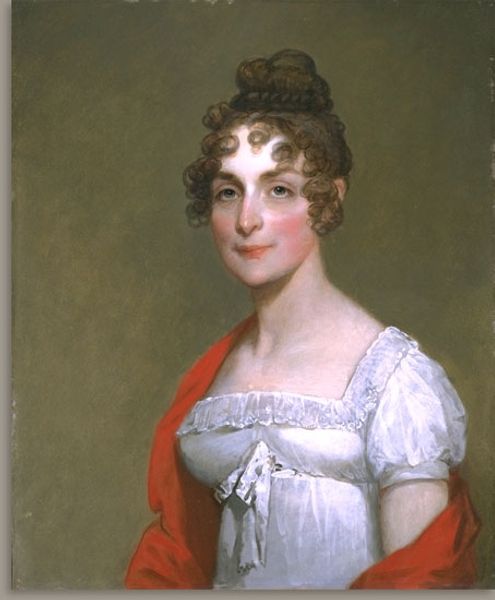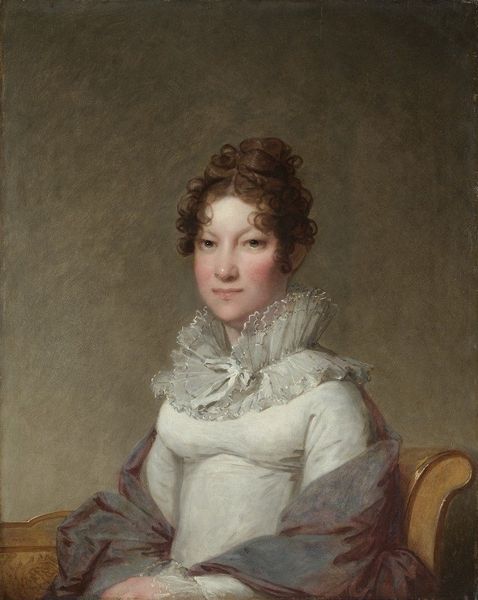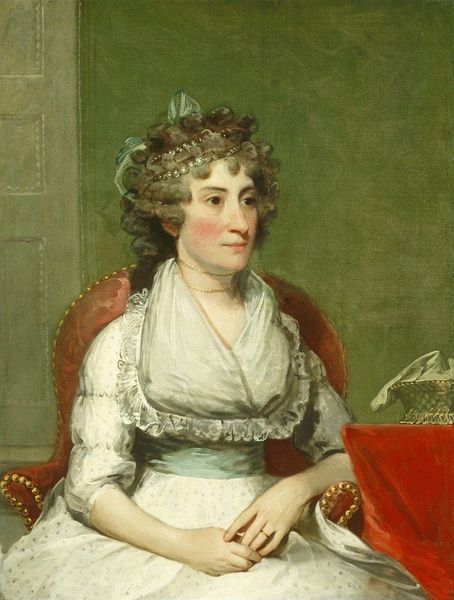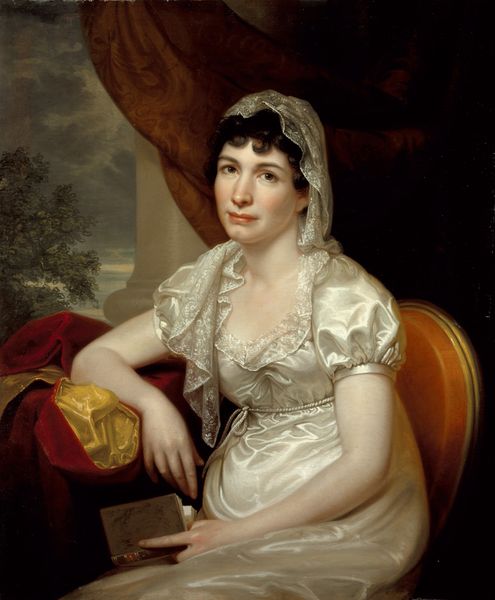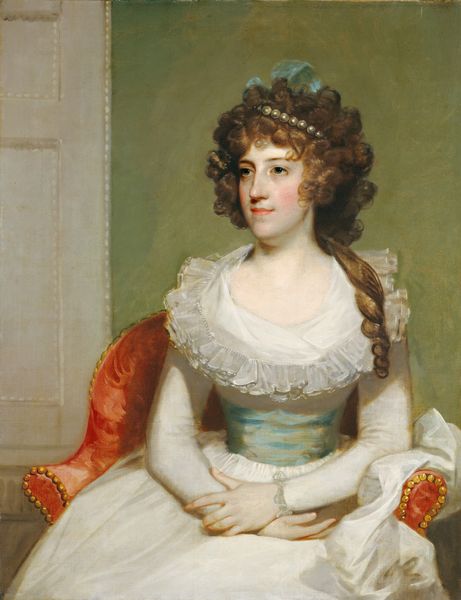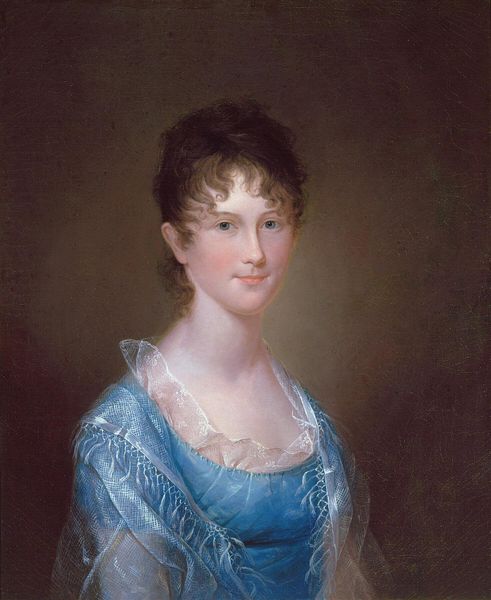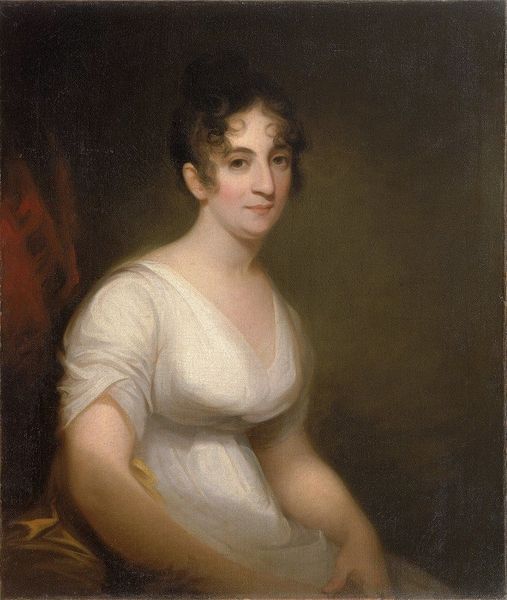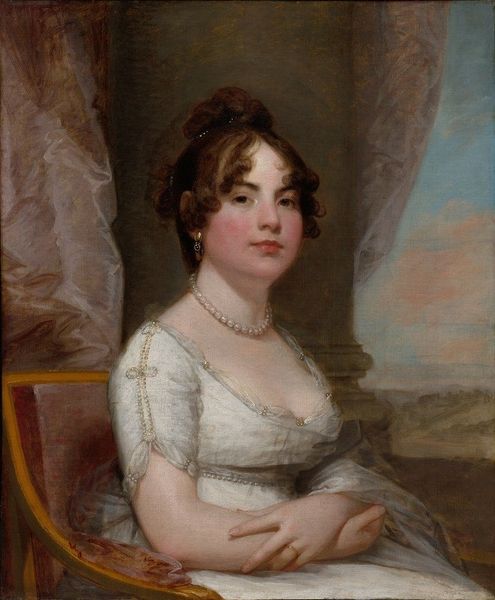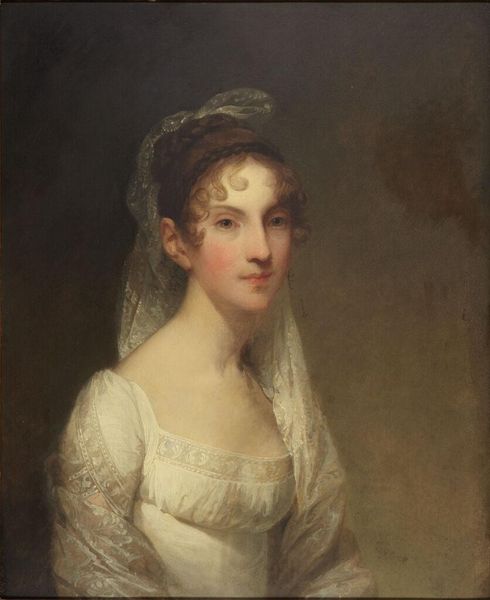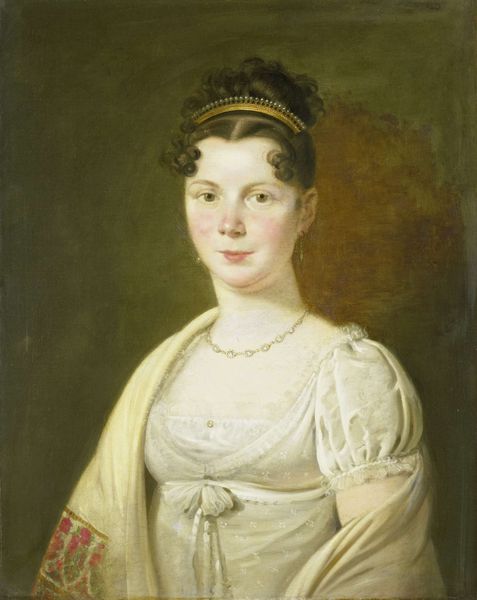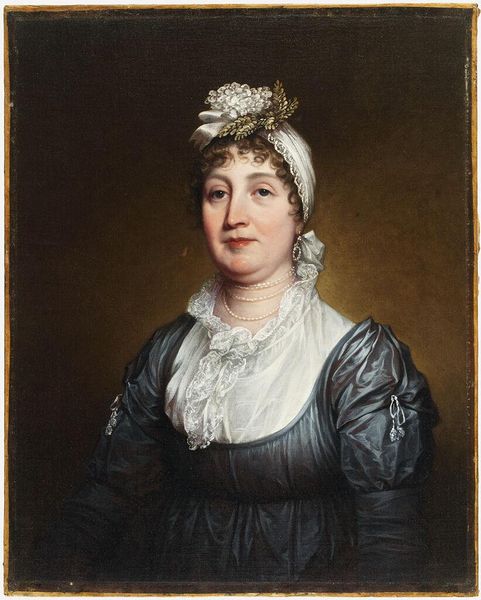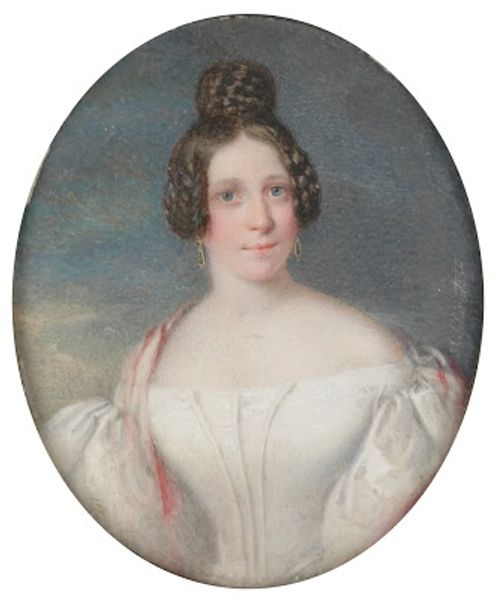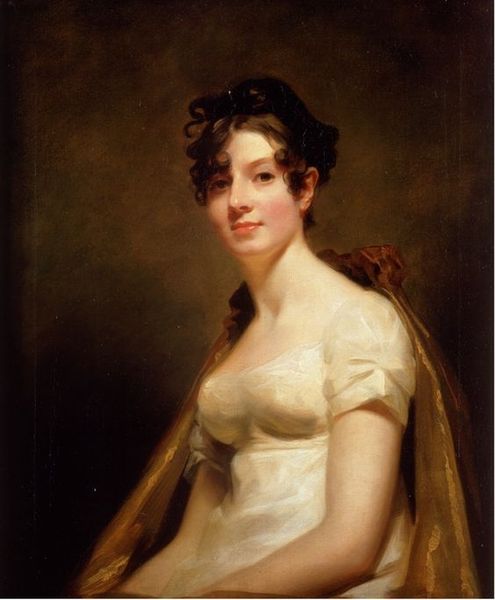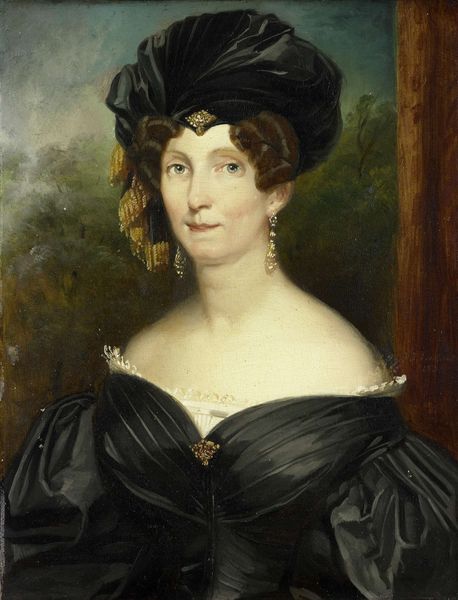
painting, oil-paint
#
portrait
#
painting
#
oil-paint
#
figuration
#
romanticism
#
history-painting
#
academic-art
Copyright: Public domain
Curator: Here we see Gilbert Stuart's "Elizabeth Tuckerman Salisbury," completed in 1811. Stuart, of course, was one of the foremost portrait painters in early America. Editor: Immediately, I'm struck by the almost severe formality, yet softened by those delicate touches of lace and the subtle gradations of color in her dress. There is an appealing balance. Curator: Absolutely. The sitter, Elizabeth Tuckerman Salisbury, came from a wealthy and influential merchant family in Massachusetts. A portrait such as this would have been a statement of social standing and refinement. Notice the power dynamics inherent in portraiture, too. Who commissions it and why? Who is immortalized and on whose terms? Editor: Interesting point. But focusing on technique, Stuart's masterful use of light and shadow is clear. He has built form through subtle tonal variations. Observe the planes of her face and how her features emerge, molded by the fall of light. Curator: Right, and we should acknowledge that artistic choices like this reinforce the subject’s idealized beauty—reflecting prevalent societal values around gender, appearance, and class during that period. The emphasis on pale skin and delicate features also spoke to the elite class she inhabited. Editor: Certainly, the artist conveys status. I am drawn to the almost sculptural quality of the ruff around her neck. It has been meticulously painted. It leads the eye and showcases incredible skill in rendering fine detail. Curator: It also showcases access. It tells us about consumer culture, fashion, and how identity was performed. Every material detail – from the fabrics to the jewelry - had a significance tied to larger economic and social systems. This also contributes to debates about beauty ideals and representation of women through art history. Editor: It becomes a dialogue about both her and the artist. The visual language speaks volumes. I've focused my observations primarily on Stuart's talent and choices. The execution is undeniably elegant. Curator: It’s precisely by examining the layers that works of art really come alive – that’s how they retain contemporary relevance and become vehicles for social change.
Comments
No comments
Be the first to comment and join the conversation on the ultimate creative platform.
